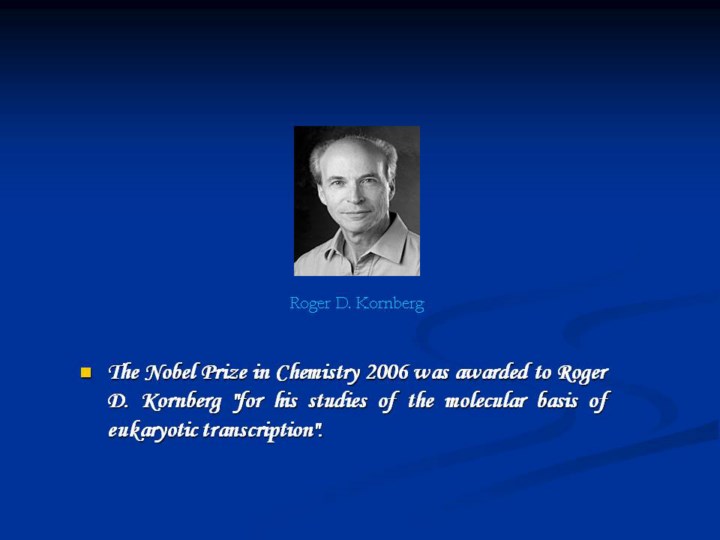| front |1 |2 |3 |4 |5 |6 |7 |8 |9 |10 |11 |12 |13 |14 |15 |16 |17 |18 |19 |20 |21 |22 |23 |24 |25 |26 |27 |28 |29 |30 |31 |32 |33 |34 |35|36 |37 |38 |39 |40 |41 |42 |43 |44 |45 |46 |47 |48 |49 |50 |51 |52 |53 |54 |55 |56 |57|58 |59 |60 |61 |62|63 |64 |65 |66 |67 |68 |review |
 |
Kornberg was the first to create an actual picture of how transcription works at a molecular level in the important group of organisms called eukaryotes (organisms whose cells have a well-defined nucleus). Humans and other mammals are included in this group, as is ordinary yeast. In 2006, Kornberg received the Nobel Prize in Chemistry, thirty-seven years after his father, Arthur Kornberg. able to use X-ray crystallography to solve the 3-dimensional structure of RNA polymerase at atomic resolution. He has recently extended these studies to obtain structural images of RNA polymerase associated with accessory proteins . Through these studies, Kornberg has created an actual picture of how transcription works at a molecular level…According to the Nobel Prize committee, "the truly revolutionary aspect of the picture Kornberg has created is that it captures the process of transcription in full flow. What we see is an RNA-strand being constructed, and hence the exact positions of the DNA, polymerase and RNA during this process
|